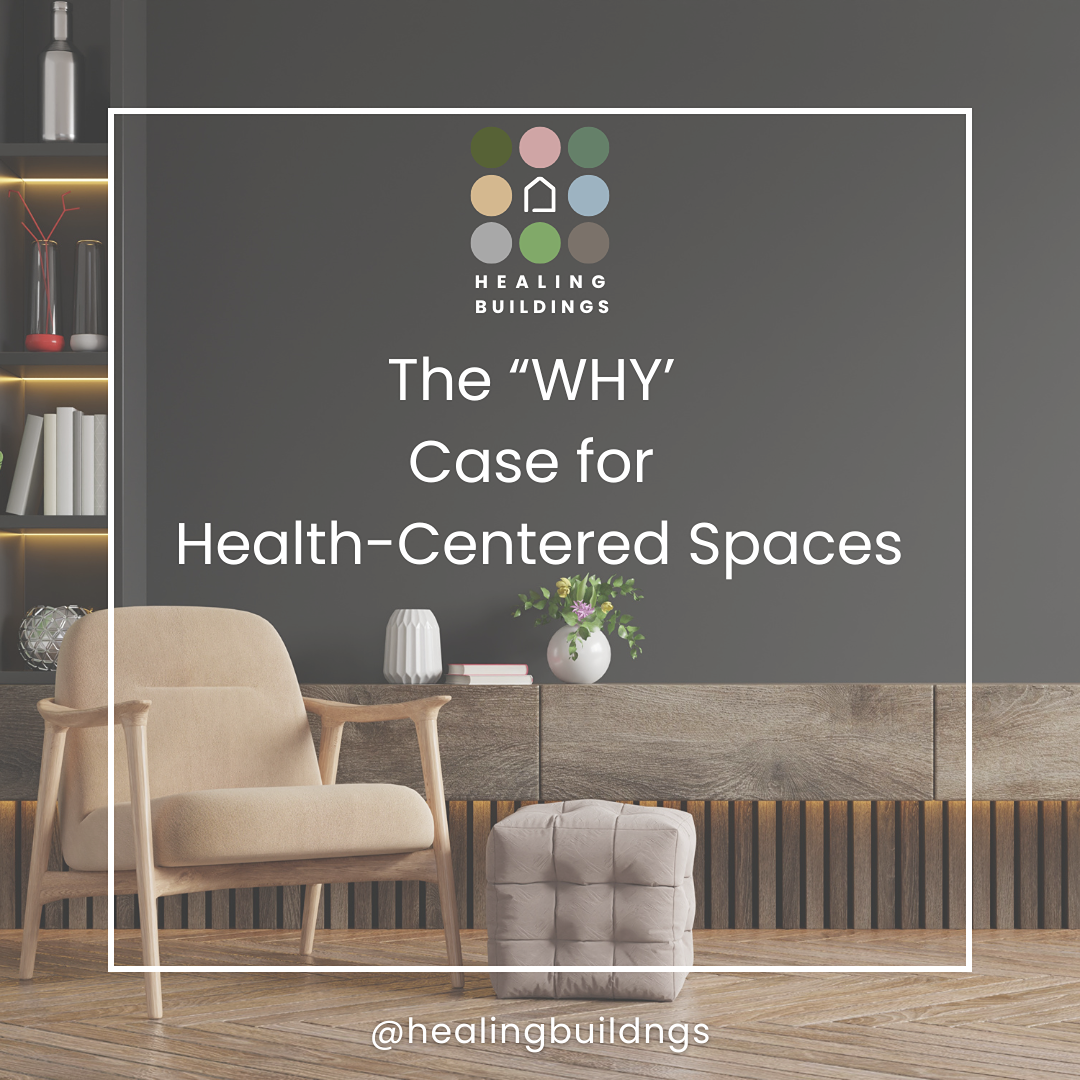The Why of Healing Buildings: A Case for Health-Centered Spaces

Why should healing buildings matter to us all? The answer lies in their profound potential to transform lives, communities, and even societies. We need to heal the built environment so that buildings and spaces are not just about aesthetics or luxury; they are about necessity—meeting our fundamental need for environments that sustain, protect, and enhance our well-being. With so much of our time spent indoors, the quality of our built spaces directly impacts our physical and mental health. The case for healing buildings is not just practical but moral, rooted in the belief that health is a human right, not a privilege.
Three Reasons Why Healing Buildings Matter
Human Health Depends on the Built Environment
The built environment is a cornerstone of our health. Poorly designed spaces can exacerbate chronic diseases, increase stress levels, and contribute to the rise of illnesses such as asthma and depression. On the other hand, healing buildings promote health by leveraging principles such as good ventilation, natural light, and low-toxicity materials. These features are not just preferences but essentials for well-being. When we design spaces with health in mind, we reduce the burden on healthcare systems and empower individuals to lead healthier lives.
Economic and Social Benefits
Investing in healing the built environment we deliver measurable economic and social returns. Healthy workers are more productive, children in well-designed schools perform better academically, and patients in healing-focused healthcare facilities recover faster. Additionally, the ripple effects extend beyond individuals: healthier communities are more resilient, socially connected, and economically vibrant. Ignoring these benefits comes at a cost—both in terms of human suffering and financial loss. Healing buildings represent an opportunity to align human health with economic growth and social equity.
Environmental Responsibility and Resilience
The concept or idea of healing the built environment align with the broader mission of environmental sustainability. By prioritizing energy efficiency, renewable materials, and biophilic design, they contribute to reducing our ecological footprint. Moreover, healthier buildings are more resilient to climate change impacts, protecting their occupants from extreme weather and improving urban resilience. Healing buildings are a tangible way to address the intertwined crises of human health and environmental degradation, creating spaces that support life in all its forms.
Conclusion
The case healing buildings is compelling and multifaceted. They are essential for improving human health, driving economic and social benefits, and addressing pressing environmental challenges. The "why" of healing buildings is rooted in their potential to create a healthier, more equitable, and sustainable world. We can no longer afford to view health as an afterthought in design and construction. Instead, we must champion healing buildings as a universal standard, ensuring that the spaces we inhabit are not just shelters but active contributors to our well-being. This is not just an architectural movement but a moral imperative
Why Are Healing Buildings Needed Now?
Our world is facing urgent challenges: climate change, health crises, and social inequality. Healing Buildings address these issues by:
Reducing carbon footprints and restoring ecosystems.
Improving mental and physical health through intentional design.
Building equitable, inclusive spaces that bring people together.
How Can You Get Involved?
Learn: Join our workshops and CPD programs to deepen your understanding of healing design.
Collaborate: Partner with us to design or consult on your next project.
Explore: Visit our new webpage to learn more and connect with our mission here.
✨ Let’s create a world where buildings don’t just exist—they heal.
➡️ Stay tuned for the next post in this series: “How Healing Buildings Matter”.


Click on this text to start editing and enter your own text with some basic formatting. Just click anywhere outside the text box when you're done to continue working on the rest of your page. Elements like this text can often be hidden in the block settings.
